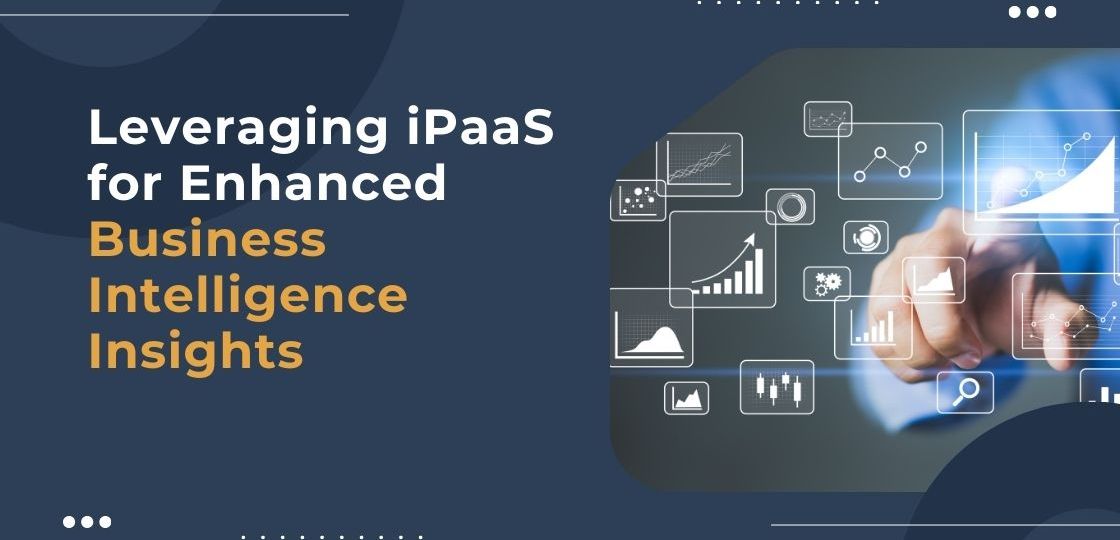
In today’s highly competitive landscape, business intelligence and data & predictive analytics have become integral for informed, evidence-based decision-making. However, many organizations need help with fragmented data and manual reporting processes and have difficulty formatting & optimizing analytics – all hurdles to efficiently understanding where a business is and, importantly, where insights are gained for future developments.
An Integration Platform-as-a-(software)-Service (iPaaS) now provides a solution for unlocking the full potential of business intelligence by unifying data and accelerating analytics pipelines.
Incorporating AI for Advanced Insights
To extract insights from continually accumulating data, organizations are applying artificial intelligence and machine learning capabilities like predictive analytics, recommendations and natural language processing.
Optimizing finished models, however, poses challenges. iPaaS overcomes these challenges by seamlessly embedding apps, automation, and AI tools with powerful analytical capabilities. Selected apps and reusable templates enable anyone from a business development team to high-level data scientists to swiftly test & deploy variables at an enterprise scale.
Increasingly these tools can constantly retrain algorithms with the latest datasets extracted and reset the analytics via automated iPaaS pipelines. This generates continuously refined dynamic intelligence vs static insights. Overall, iPaaS unlocks more impactful adoption of analytics AI/ML.
Core Business Intelligence Challenges
Before exploring how iPaaS enhances BI capabilities, it’s important to understand three central pain points plaguing analytics efforts:
- Data Silos: With data dispersed across on-prem and cloud systems, aggregating info into usable datasets requires heavy IT lifting. This hinders reporting cadence and access.
- Manual Processes: Extraction, transformation, and loading (ETL) of data remain hand-coded. Building reports and dashboards stays an IT-intensive effort, constraining time-to-value.
- Lack of Operationalization: Static reporting gives post-mortem analysis instead of continual intelligence for decisions. Models and experiments fail to migrate into production.
The iPaaS Solution
Integration Platform-as-a-Service solutions help tackle each BI challenge through cloud-based application and data connectivity, integration templates, automation capabilities and more – all delivered through an intuitive & customizable interface.
- Unified Data Accessibility: Pre-built connectors streamline aggregating related datasets from diverse sources into unified analytics repositories like data warehouses and lakes. This breaks down data silos.
- Automating ETL Pipelines: Trigger-based tools, mappings, and pre-defined workflows automate multi-step ETL processes to move data from sources into analytics environments. This accelerates cyclical reporting.
- Empowering Operationalisation: Embedded connectivity facilitates pushing finished models directly into business applications and workflows to trigger real-time predictive analytics. This achieves operationalization at scale.
- Democratizing Insights: Intuitive drag-and-drop interfaces empower non-technical users across the business to easily access, analyze, and share data without great technical skills. This helps democratize insights.
Augmenting Self-Service Analytics
While disconnecting analytics from IT bottlenecks is crucial, self-service tooling for business teams remains imperative for flexible, iterative analysis. iPaaS solutions readily combine with leading BI tools like Tableau, Power BI, and Looker offering user-friendly analytics interfaces granting business teams autonomy.
With visually intuitive report and dashboard builders, drag-and-drop chart creation, natural language query capabilities and interactive visualizations, teams can freely explore data, unearth trends and generate reports tailored to needs without coding. More flexible analysis tools paired with expanded access to unified datasets via iPaaS connectivity transform self-service analytics.
Powering Strategic Decision Making
While operational analytics offer tactical insights, iPaaS also empowers strategic enterprise analysis by connecting core business systems. Unified datasets incorporate financials, sales, marketing campaigns, inventory and more, ground leadership decisions in definitive cross-functional business intelligence.
Broader enterprise data accessibility through iPaaS, coupled with automated reporting and dashboarding, transforms static operational reports into dynamic views illuminating performance across KPIs, metrics, dimensions, and tools. Strategic planning becomes more data-centric and underpins sound management decision-making.
The Bottom Line
By resolving perennial integration and automation challenges, iPaaS solutions empower enterprises to realize the full business intelligence potential of their data assets. The outcomes can be transformative – data-driven processes, informed strategic planning, reduced costs and accelerated deployments. For organizations hindered by analytics hurdles, exploring how iPaaS can help overcome barriers is crucial, especially with growing data volumes on the horizon.
